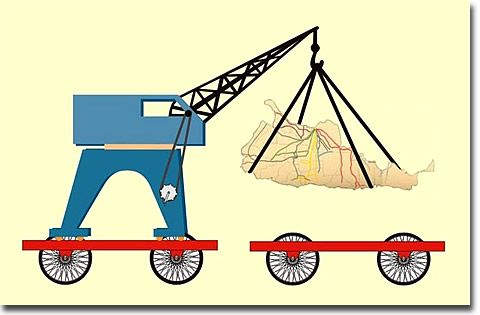Palais de Glace,
Feb 15, 2006 - Mar 19, 2006
Buenos Aires, Argentina
The construction of çLa Normalidadç in Buenos Aires ç Project Ex Argentina
by Viviana Usubiaga
On the concept of "normality", Gabriela Massuh, the show’s general director, affirms: "For this opportunity, the participants reflect upon the invisible group of hidden tensions that were left by the crash of late 2001. On one hand, there exists a feeling of return, that the crisis of 2001 is behind us and that, thanks to the economic reactivation, we are slowly coming into "la normalidad" (normality). On the other hand, the indices of poverty have not diminished. Today, for 70% of the population, living in precarious conditions and poverty is considered "normal".It is "normality" for the few, and directed at those people who are still part of "society". This normality feigns the permanence of the recuperation, when what is truly stable are insecurity and injustice for the majority. This situation is not peculiar to Argentina and is occurring throughout the whole world." Thus, the different pieces, installations, documentation of actions and interventions that make up the exhibition try to deactivate the idea of "normality" and quarry the rhetoric that fabricates it. Using different languages, the artists contrast their reflections with the discursive constructions elaborated by the apparatus of the State and the political, economic and cultural elite, who endeavor to exorcise the crisis, reabsorbing its current reality in the name of a supposed "return to normality".
This complex exhibition - under the artistic coordination of Creischer and Siekmann, together with Loreto Garin Guzman, Eduardo Molinari and Federico Zukerfeld, and the general coordination of Sol Arrese y Stephanie Tonn - is structured on four conceptual points: Denial, Militant Research, Cartography and Political Narration. Denial refers to the rejection of the false capitalist harmony and its promise of inclusion. It proposes a movement to substitute "working" (understood as employment) for "doing". Militant Research alludes to the renewal of the researcher’s commitment to the political praxis, while it simultaneously questions whether that political commitment may be translated into an artistic application. Cartography shows, once more, the diffuse character of certain geopolitical categories in the present times of new wars, forms of globalized exploitation and forced migrations. Political Narration questions the narrative possibilities of the plastic arts and examines the efficacy of the forms with respect to their effects upon audiences. At the same time, it reflects upon the pertinence of the institutions that act as mediators between producers and spectators.
Some of the works articulated under the first point are the installation by the Die glücklichen Arbeitslosen [The Happy Idle] group of Berlín - realized in cooperation with the Argentinian Collective Etcetera - with fragments of the work presented in the Ludwig Museum that waxed ironic upon the 1999 meeting of representatives of the G8 summit at the same venue; two works by Leon Ferrari, a sculpture made of bones that represents " the scandal of poverty", and a map of Argentina delineated with shiny plastic materials, similes of the flags of street musicians; the installation The Problem Park, made as a collaboration between Eduardo Molinari (Buenos Aires) and Jürgen Stollhans (Cologne), in which a series of drawings, photographs, filing material, machines and apparatus that disrupt the notion of "normality", are arranged similar to the layout of a theme park; "Shitfest", 17 posters detailing the actions of the Etcetera group in December of 2001, opposite the National Congress, and "Let’s Eat", carried out in front of McDonald’s restaurants, banks and foreign companies in March of 2002; 10 suits tailored by Alice Creischer y Andreas Siekmann, who together with the workers of the recovered Brukman factory, put together two parallel stories: that of the occupation of the factory, and that of the communiqués that the G8 summit announced from the Ludwig museum in 1999; a series of painted photographs extracted from a video that documents the repudiative actions against George W. Bush during his visit to the Summit of the Americas in the city of Mar del Plata in November of 2005, carried out by La Internacional Errorista, a (t)errorist movement that uses symbolic arms created by members of the Etcetera collective that reinvents errors as philosophy; a series of plans for conduits, water purification, houses and oil well drilling, all projects self-managed and elaborated by Juan Carlos Fernandez of the Unemployed Workers Union of General Mosconi, a town in the province of Salta in northern Argentina, paradigmatic for the acuity of the crisis as a consequence of the privatization of YPF (the national oil company);the pauperization of the population and the systematic repression - silenced by the media - of those who struggle, even today, for the reconstruction of the abandoned public infrastructure, is positioned front and center and documented by Sol Arrese’s photographs, made into ironic postcards of the province.
|













